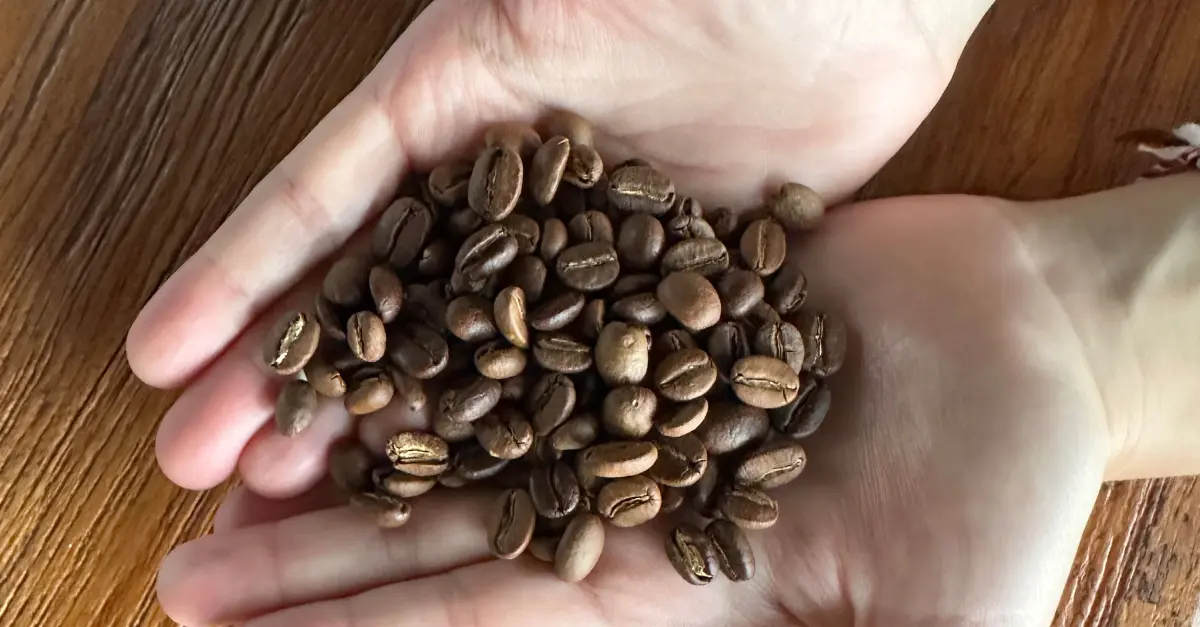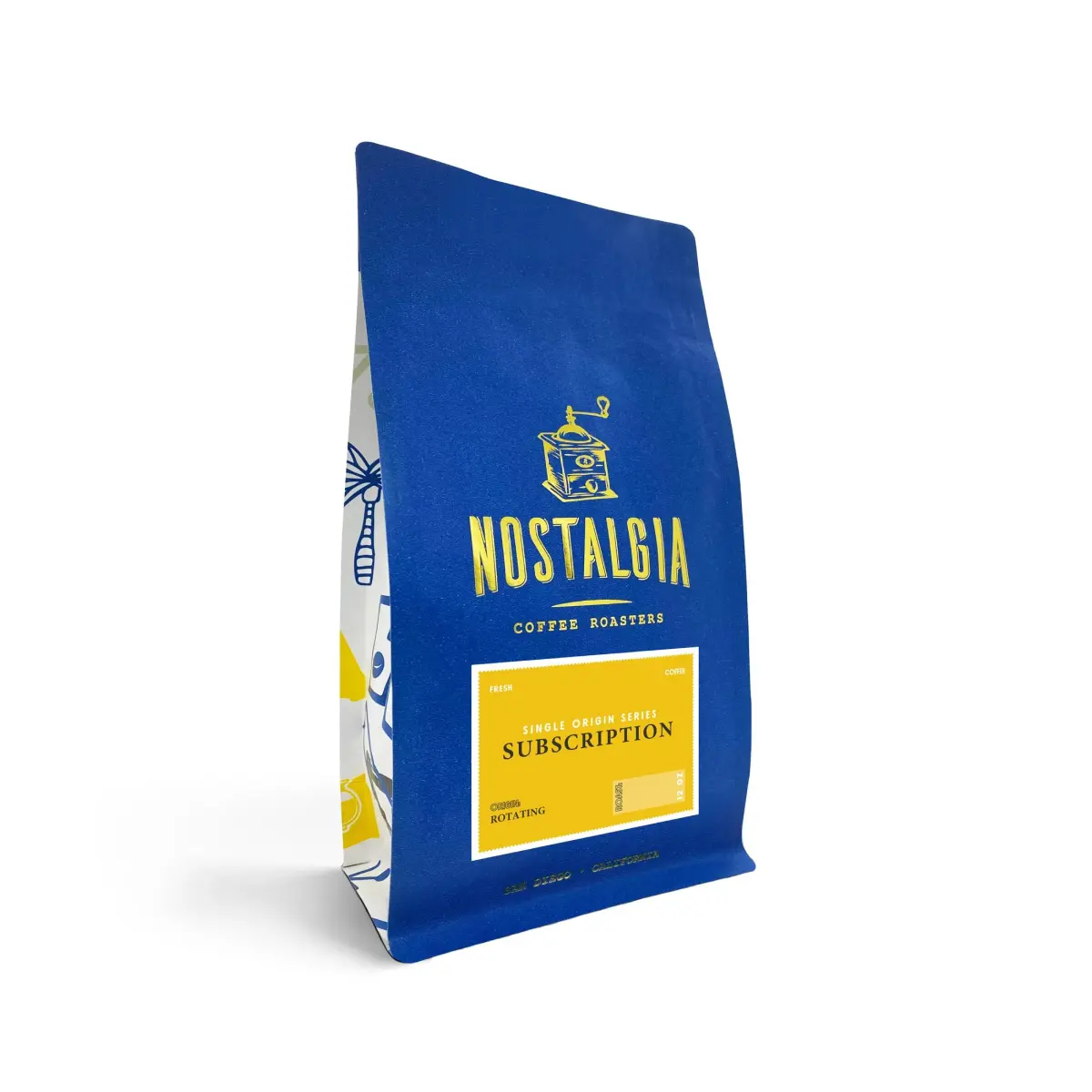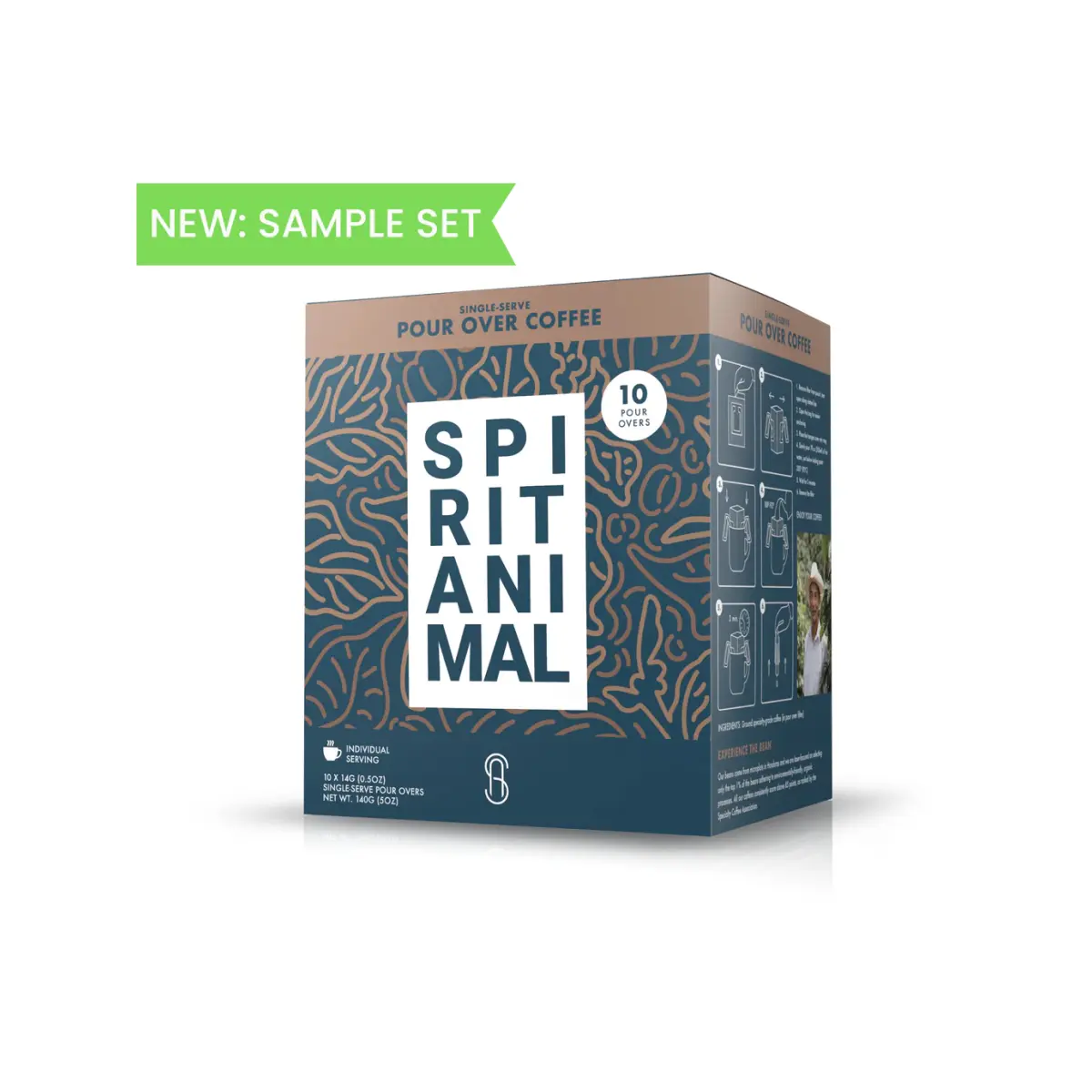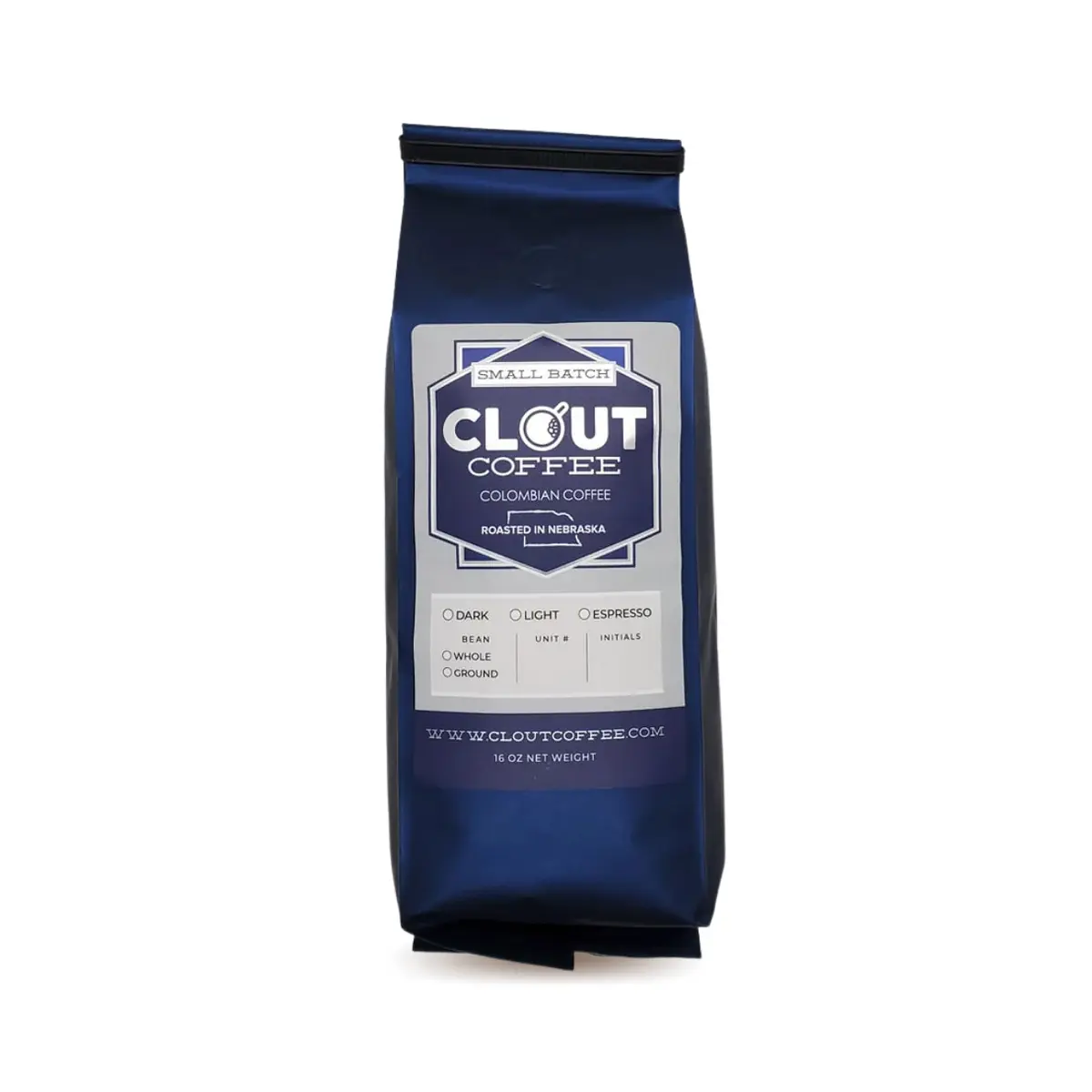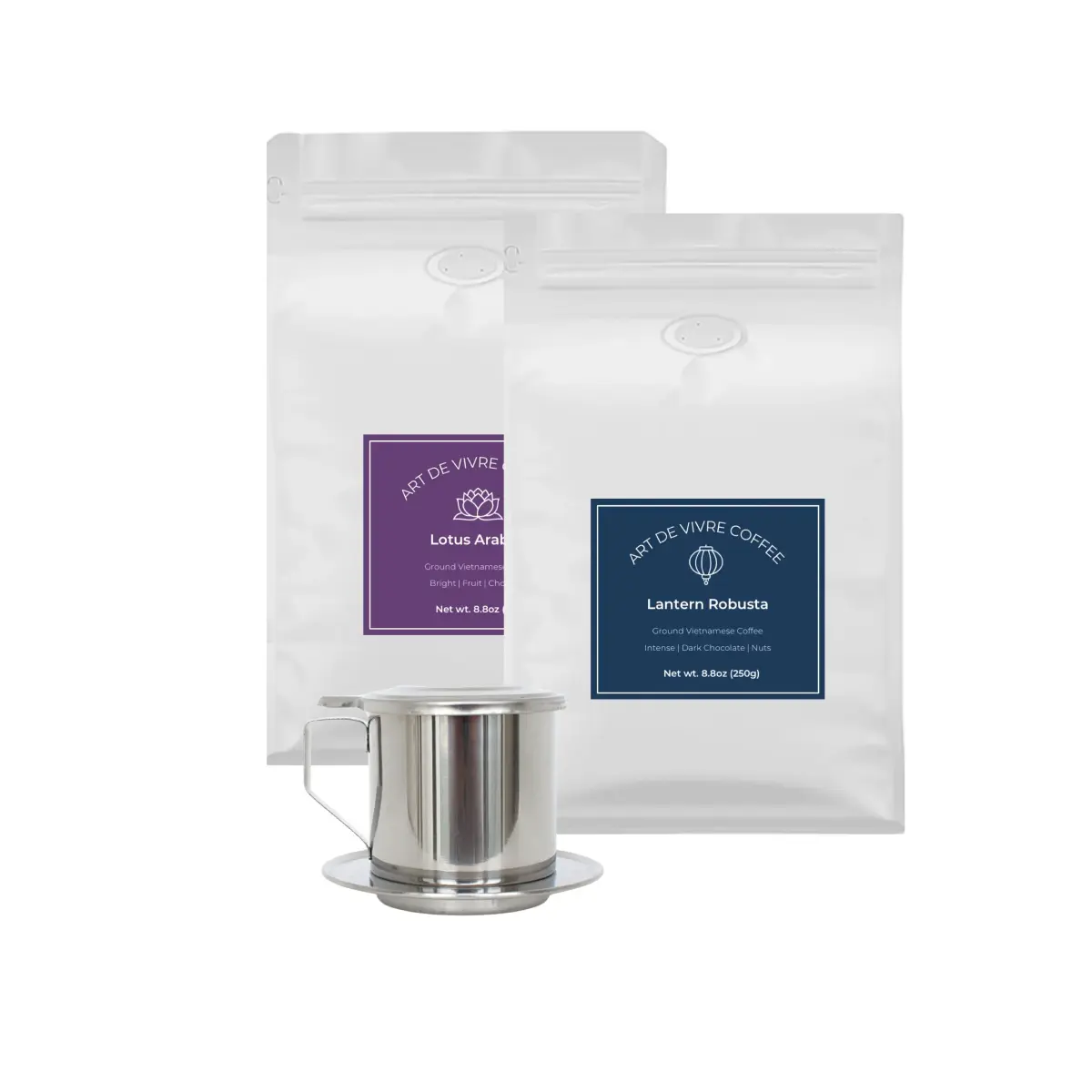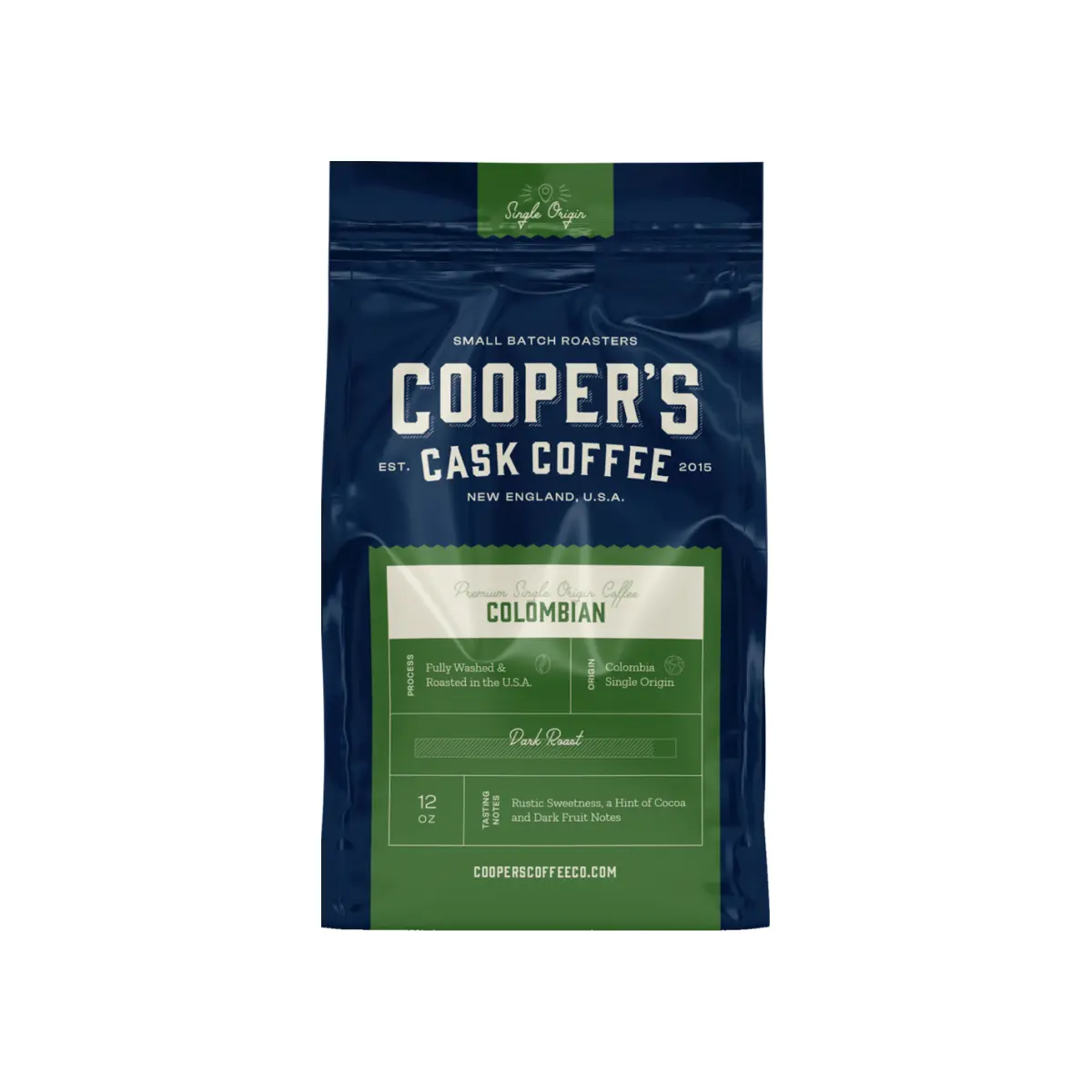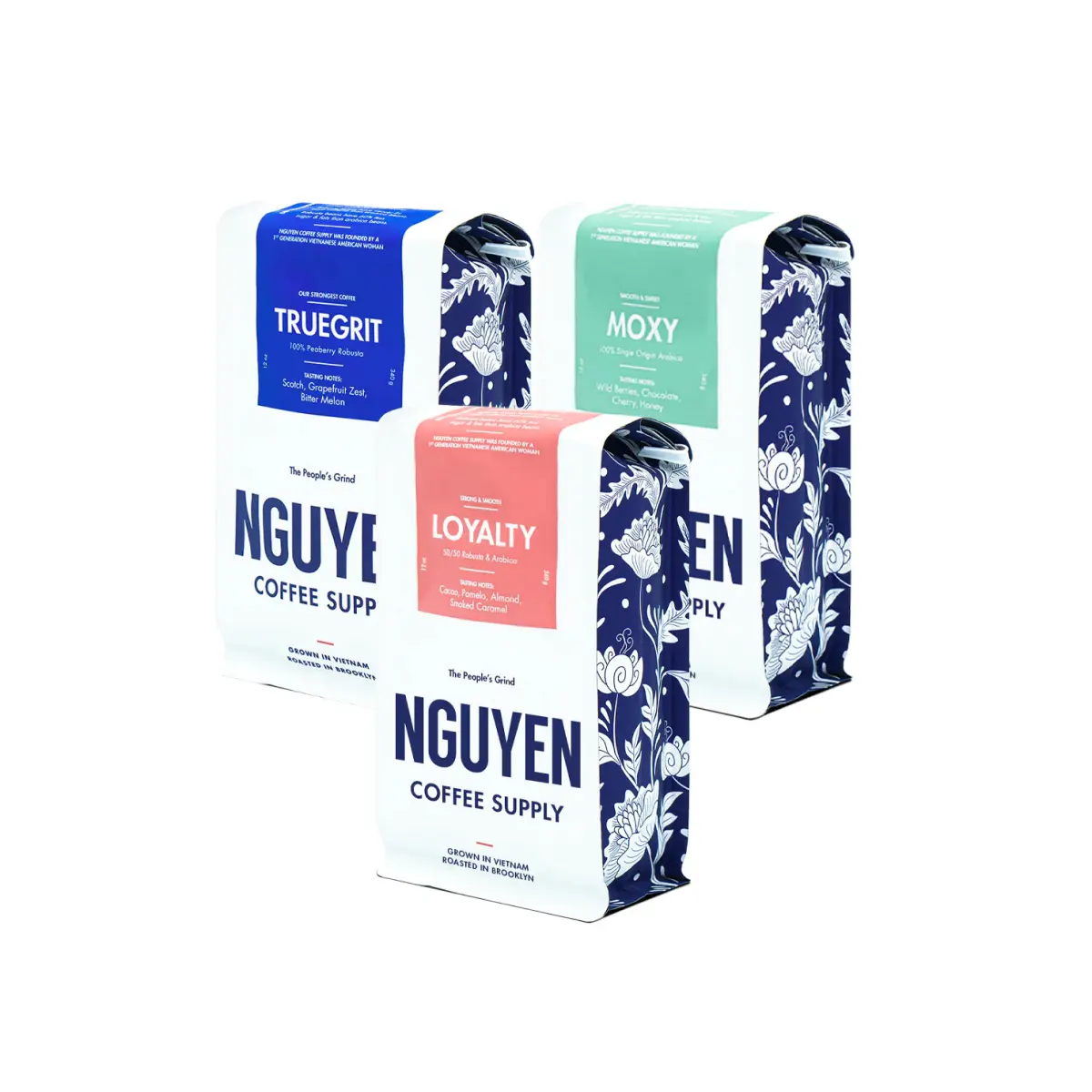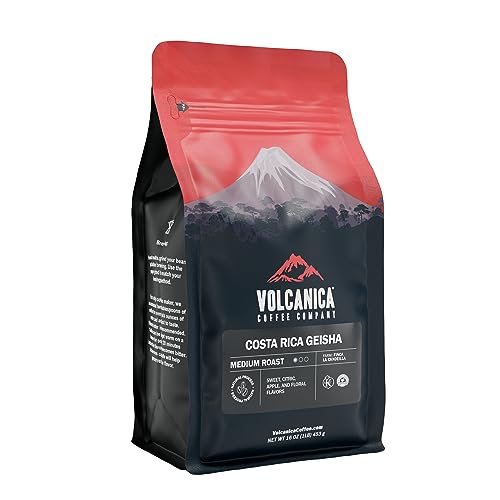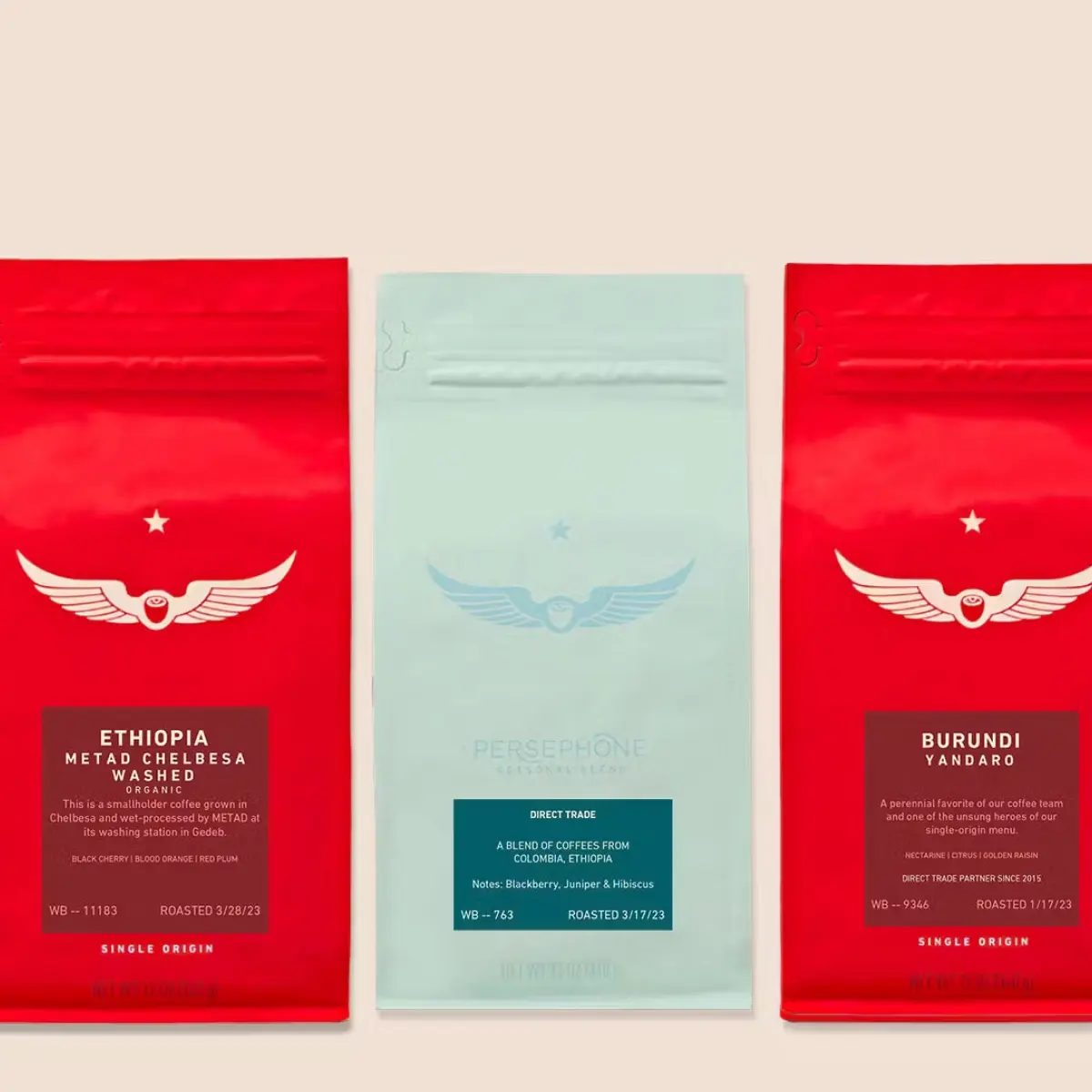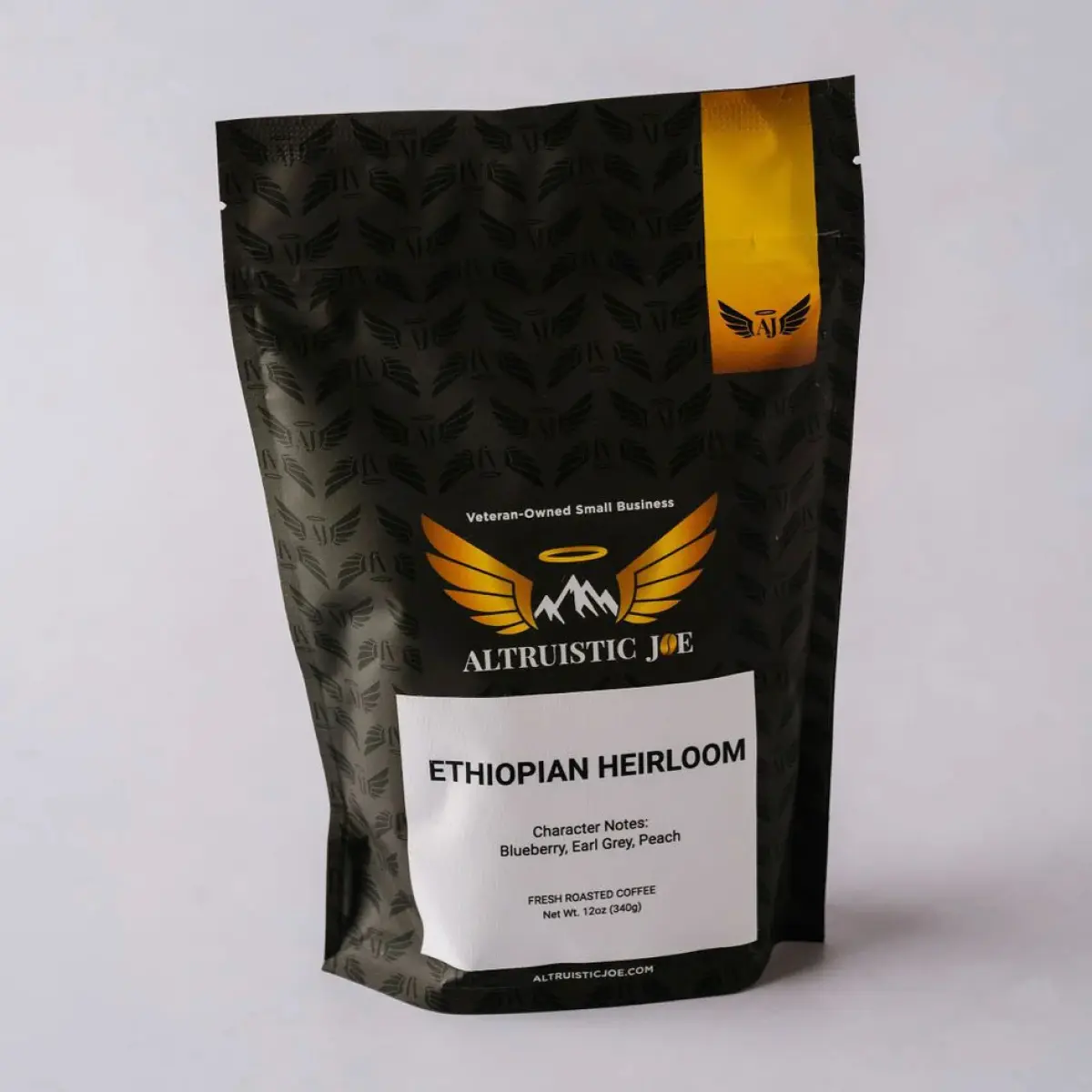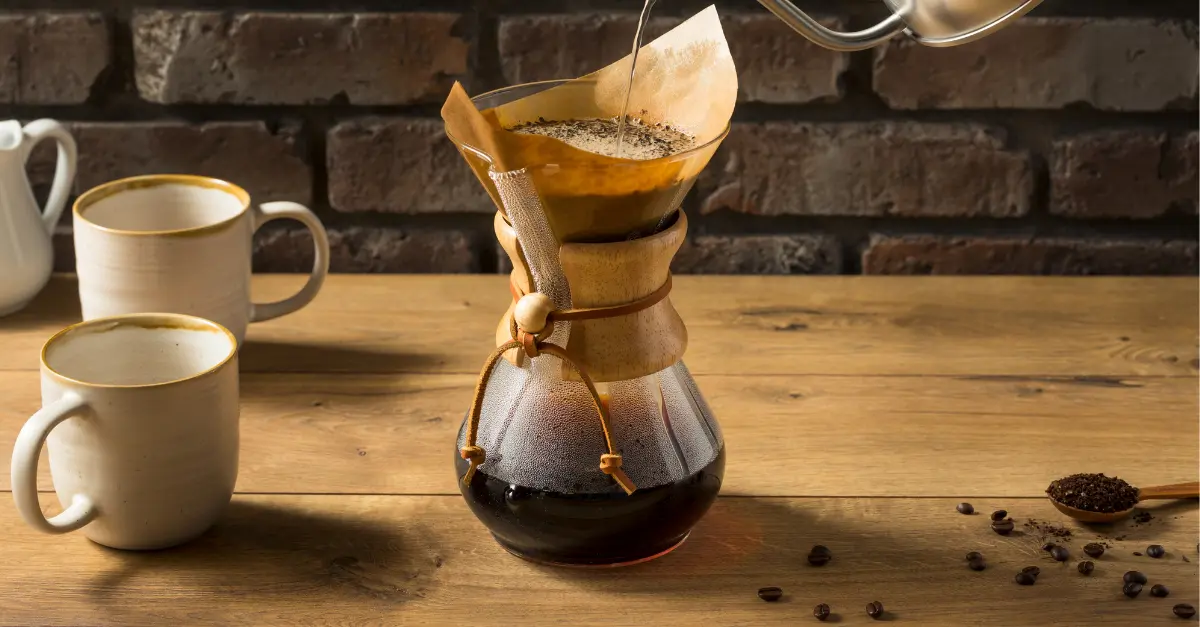Are you interested in sampling authentic coffee flavors from different regions to discover what works for you? Understanding and sampling single-origin beans coffee is the way to go. As the name suggests, single-origin coffee traces its source to a single producer.
With a single coffee variety picked from the same farm and grounds, you are guaranteed uniformity in the coffee’s priority. So, whether you are a coffee taster, a barista looking to pinpoint your signature blend, or simply want to experience authentic coffee flavors, single-origin coffee is the way to go.
However, single-origin coffee doesn’t only guarantee unique signature flavors. This coffee has been growing in popularity and demand, thanks to its ethical component. Single-origin coffee makes transparency and traceability a lot easier since it can be traced to a single farm or estate. This doesn’t just ensure quality but also fair practices. Single-estate coffee seems to check all the positive boxes.
Featured Products
Nostalgia Coffee - Single Origin Subscription
⭐ 4.8/5 • 💰 ~$17
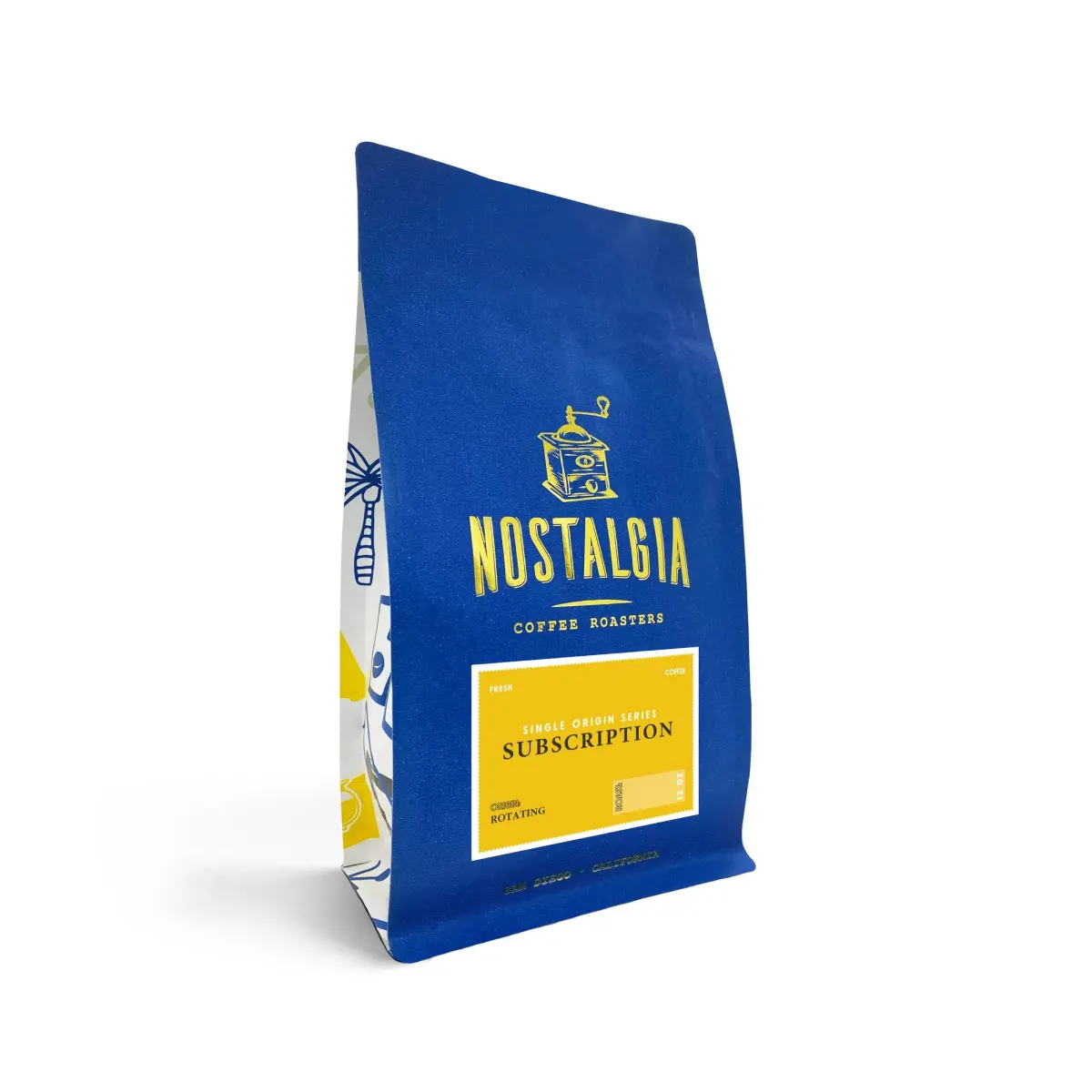
Nostalgia Coffee Roasters works with world-class coffee growers from regions across the world to source and roast award-winning coffee. The coffee roaster, however, has alittle bit more varied portfolio. You will find everything from blends to the highest quality single-origin coffee. Single-origin coffee comes from Costa Rica, Colombia, Ethiopia, and Indonesia.
The one thing that stands out about this coffee roaster is 50% of its coffee comes from women-owned farms. Further, the brand gives back up to 5% of its annual l revenue to its producers to ensure equal pay and mutual benefit. Sign up for Nostalgia’s Single Origin Subscription so you never run out of your favorite coffee.
Pros:
- Offers single origin and blends
- Offers Single-origin coffee from different regions
- Supports women-owned farms
Spirit Animal - Sample Set
⭐ 4.7/5 • 💰 ~$21
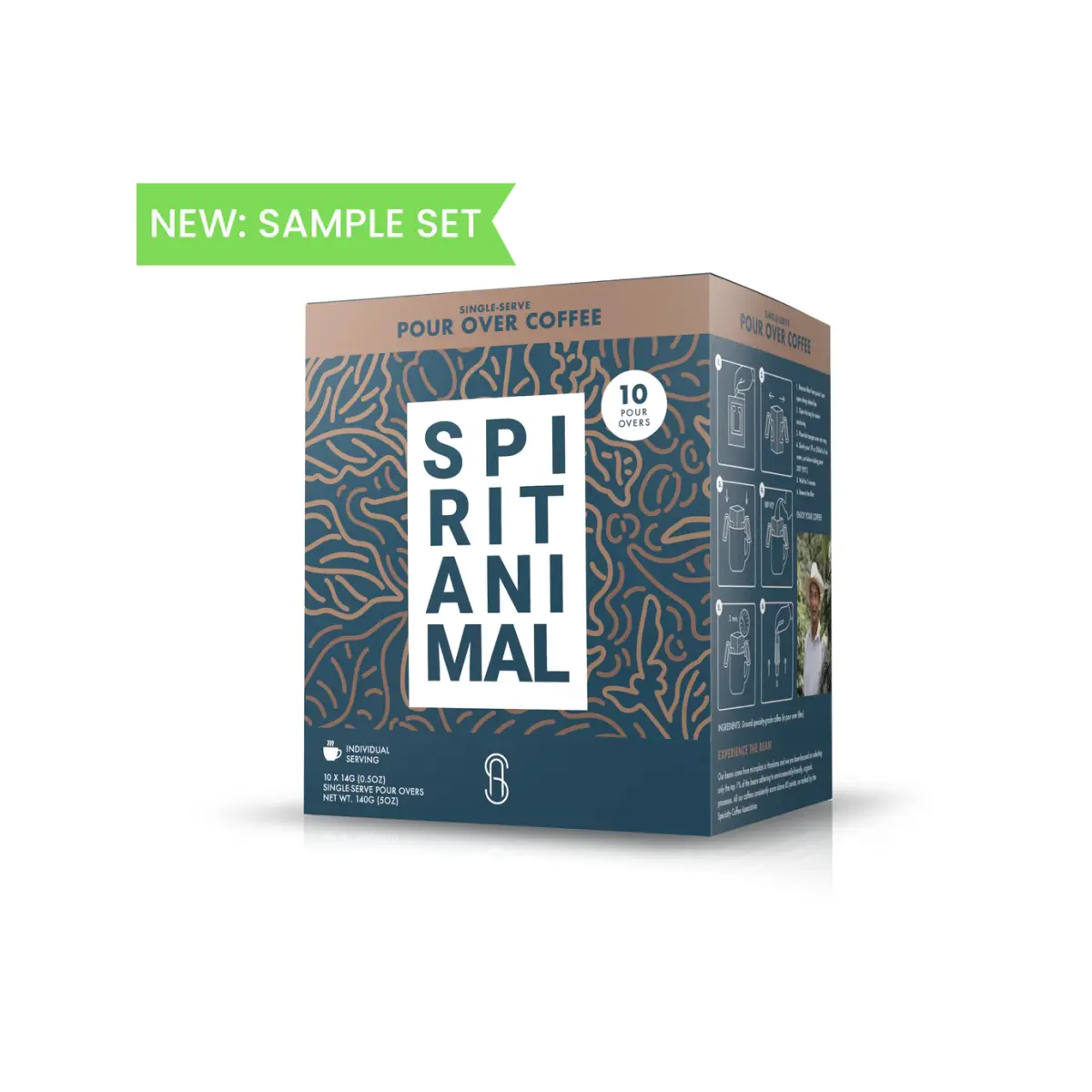
Sample Set of Spirit Animal’s Bestsellers & New Espresso Blend
Pros:
- Reasonably priced
- Certified ethical and sustainably grown coffee
- Consistent high cupping scores
- Transparency about coffee origins
Clout Coffee - Columbian Single Origin
⭐ 4.6/5 • 💰 ~$18
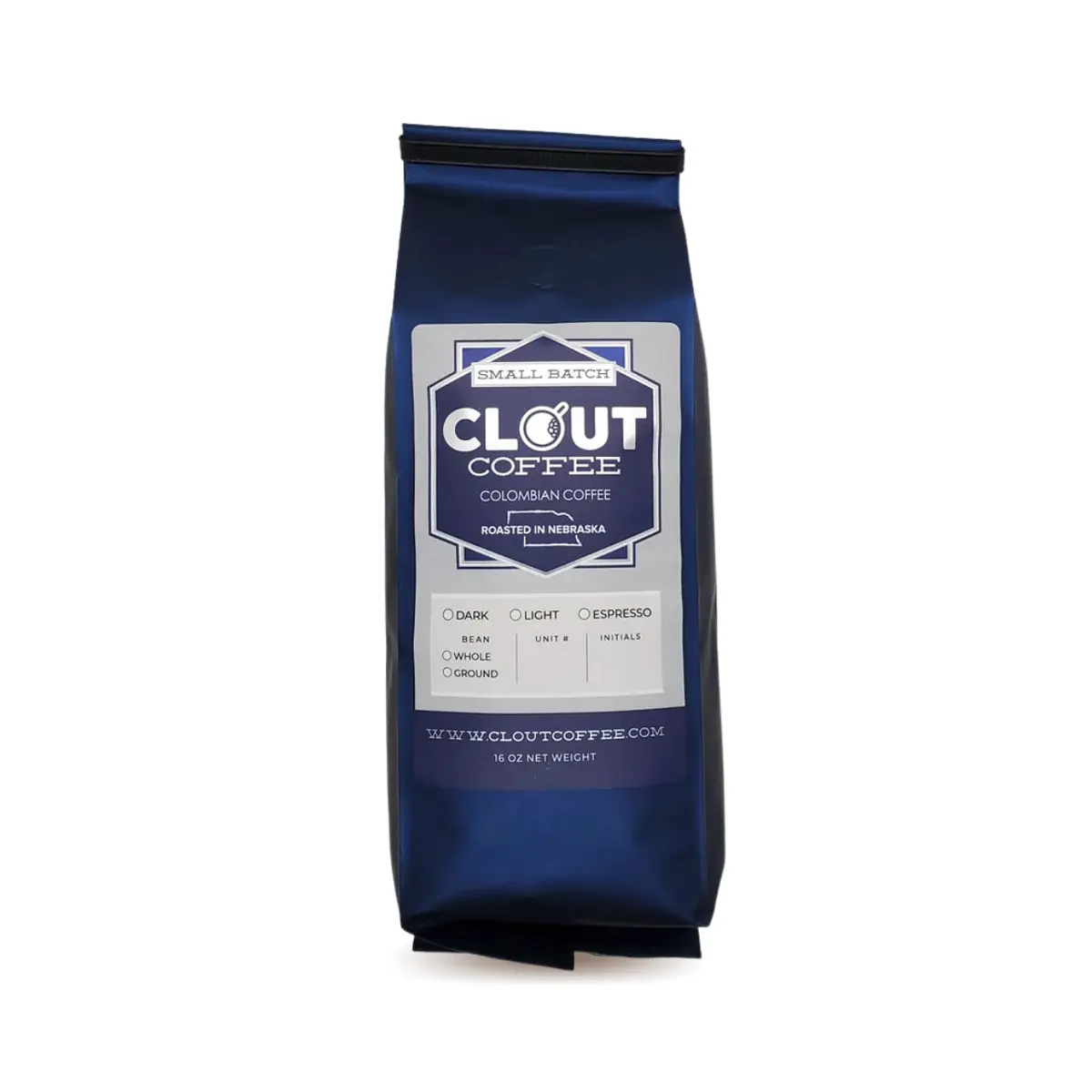
Clout Coffee sells barrel-aged whole and ground coffee beans along with single-serve K-cups, known as Clout pods. The brand offers a selection of light, dark, and espresso roasts aged in rum, rye, bourbon, and whiskey barrels.
The coffee is typically soaked up in the barrel essence before in-house roasting in small batches. The Nebraska-based brand uses unique single-origin Colombia coffee that fuses impeccably well with the barrel essence for memorable flavor profiles.
The boozy barrels produce just the right flavors to fuse well with the coffee’s distinctive chocolate and vanilla notes for a smooth and full-bodied coffee. Don’t know which flavor to go for? How about trying Clout Coffee’s All Flavors Variety Sampler, featuring bourbon, rye, rum, and whiskey-aged coffee?
Key Features:
- Sells aged and unaged coffee
- Offers a selection of bourbon, rye, whiskey, and rum barrel-aged coffee
- Offers light, dark, and espresso blends
Art de Vivre
⭐ 4.7/5 • 💰 ~$25
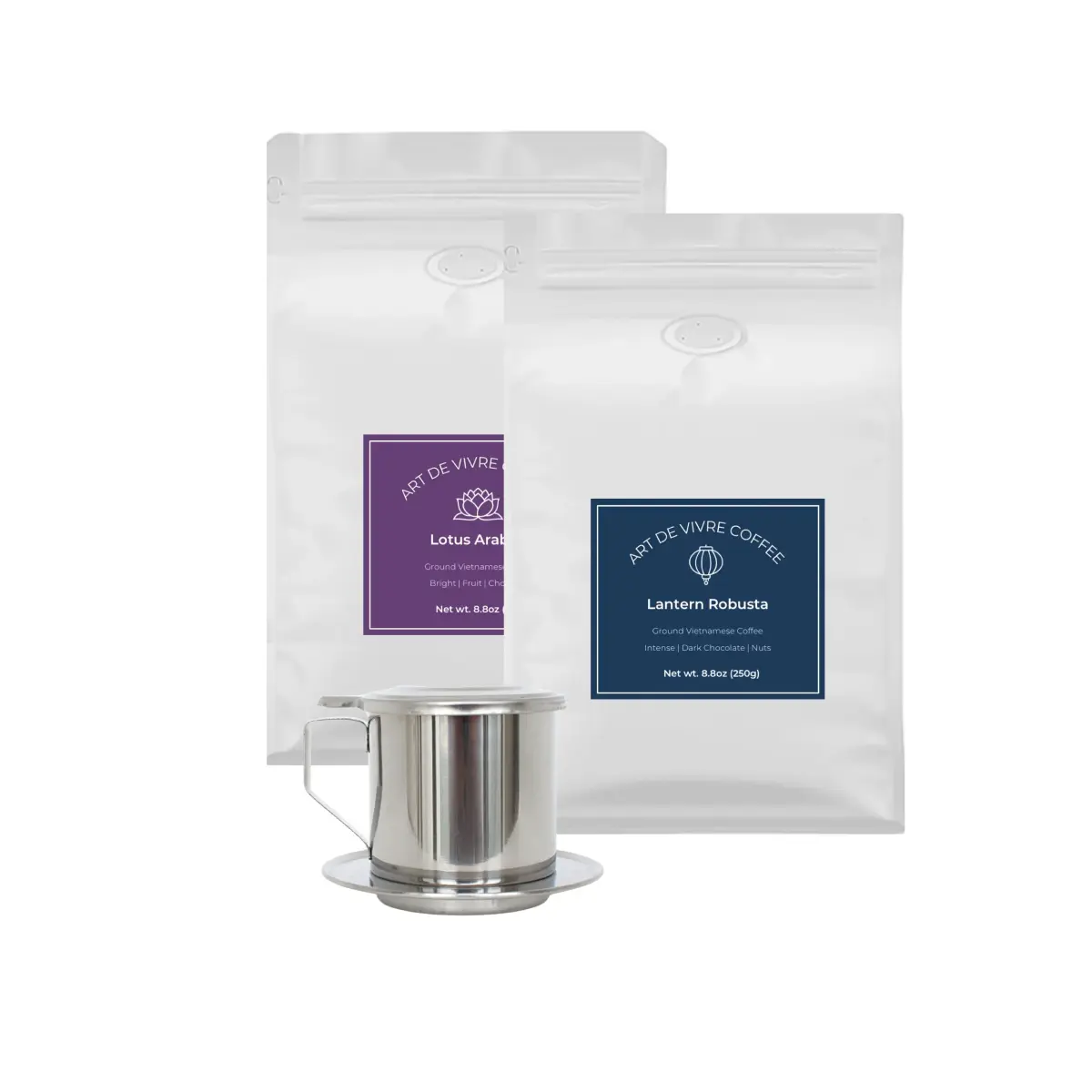
Art de Vivre was born out of a love for Vietnamese coffee. The brand was launched to address the shortage of authentic Vietnamese coffee outside Vietnam. The brand specializes in the highest quality Arabica and Robusta coffee beans sourced from the Son La province, in a mountainous area, north of Hanoi.
The US-based brand exclusively sells single-origin coffee grown at altitudes of 3900 feet to produce a distinctive floral, woody, and chocolatey flavor profile. The brand works directly with small-scale farmers of ethnic minorities who have been growing coffee for generations. Discover Vietnamese coffee with Art de Vivre’s Vietnamese Coffee Starter Kit.
Pros:
- A wide range of single-origin Vietnamese Arabica and robusta coffee
- Available in whole and grounded roasted and unroasted beans
- Focuses on a specific province in Vietnam
Cooper’s Cask Coffee - Colombian Dark Roast Coffee
⭐ 4.6/5 • 💰 ~$18
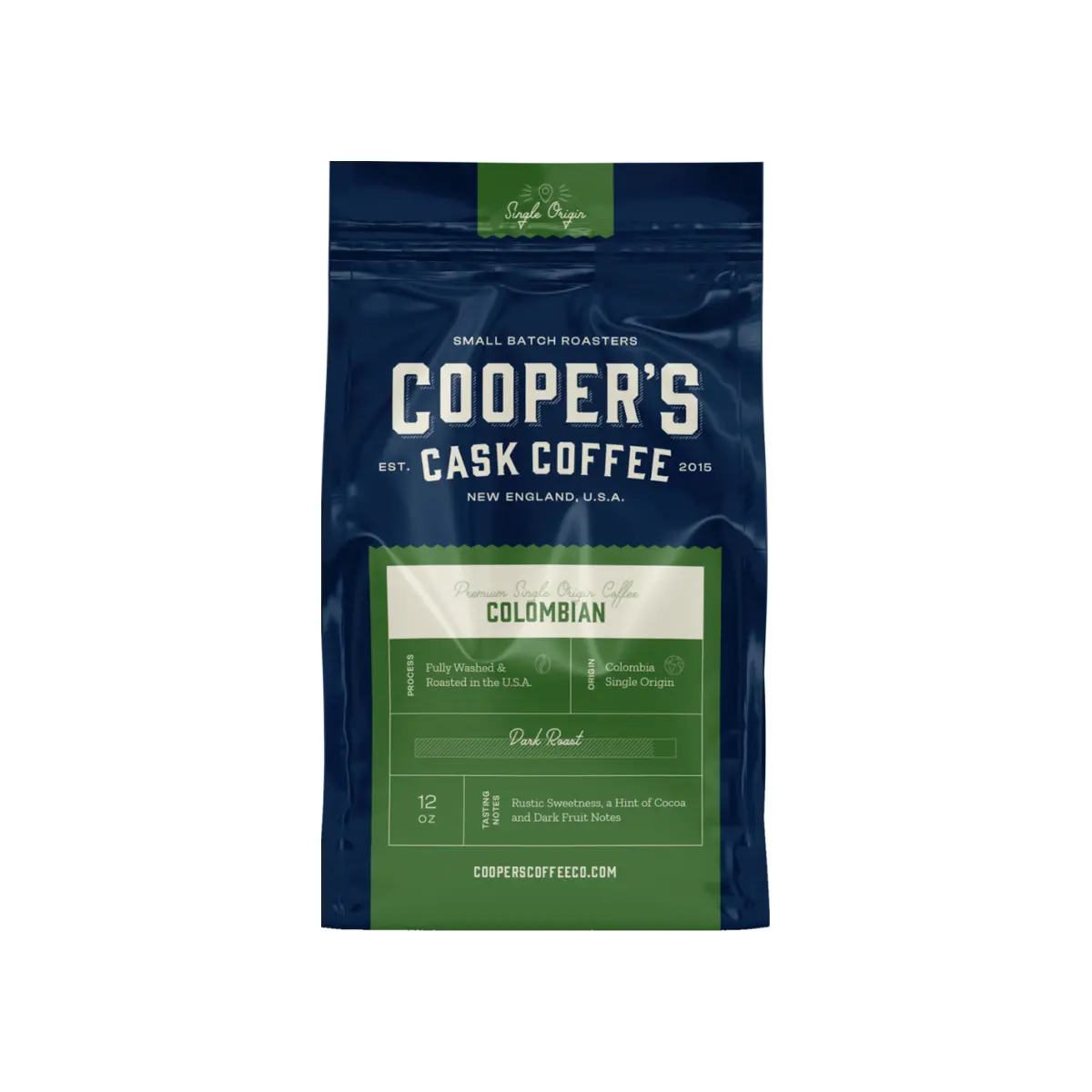
Sourced from a single-origin farm, Coopers delivers robust flavors to its dark java. Despite its wide selection of blends, the coffee is priced affordably. Grown from volcanic soil rich in minerals and nutrients, single origin Columbian coffee beans are known throughout the world for their quality. This signature roasting process helps bring out a unique and celebrated, yet mild flavor that includes hints of rustic sweetness, cocoa, and dark fruit notes. Fully Washed & Roasted in the U.S.A.
Pros:
- Strong and robust flavors
- Diverse selection of blends
- Affordable prices
Nguyen Coffee - The Original Vietnamese Trio
⭐ 4.5/5 • 💰 ~$48
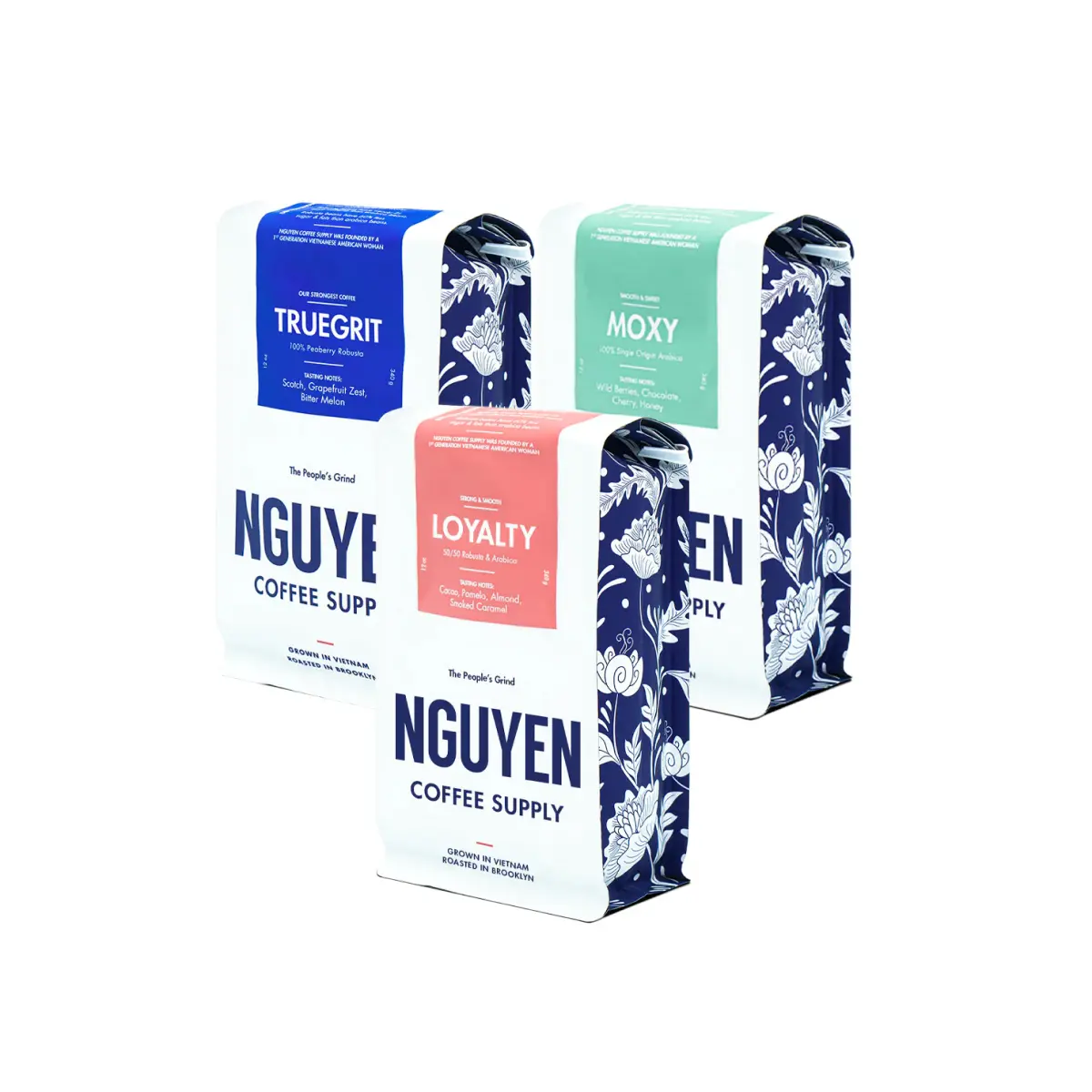
Nguyen Coffee Supply focuses on Vietnamese Coffee. The Vietnamese Coffee brand offers a selection of single-origin and blended Vietnamese coffee, including Arabica, robusta, and peaberry robusta beans. The brand imports authentic single-origin Vietnamese coffee from partner farms in Vietnam and roasts the coffee in-house in Brooklyn every week.
Built for traditional Vietnamese brewing, Nguyen Coffee Supply also offers finely ground coffee, especially dialed for Phin filters. Experience your first Nguyen Coffee Cup with the Original Vietnamese Coffee Trio.
Pros:
- Sells peaberry robusta variety
- Sells the Vietnamese coffee brewing tool, Phin filter
- Produces flavored and unflavored canned coffee brew (including classic Vietnamese coffee & condensed milk flavor)
Volcanica - Geisha Coffee Costa Rica
⭐ 4.3/5 • 💰 ~$52
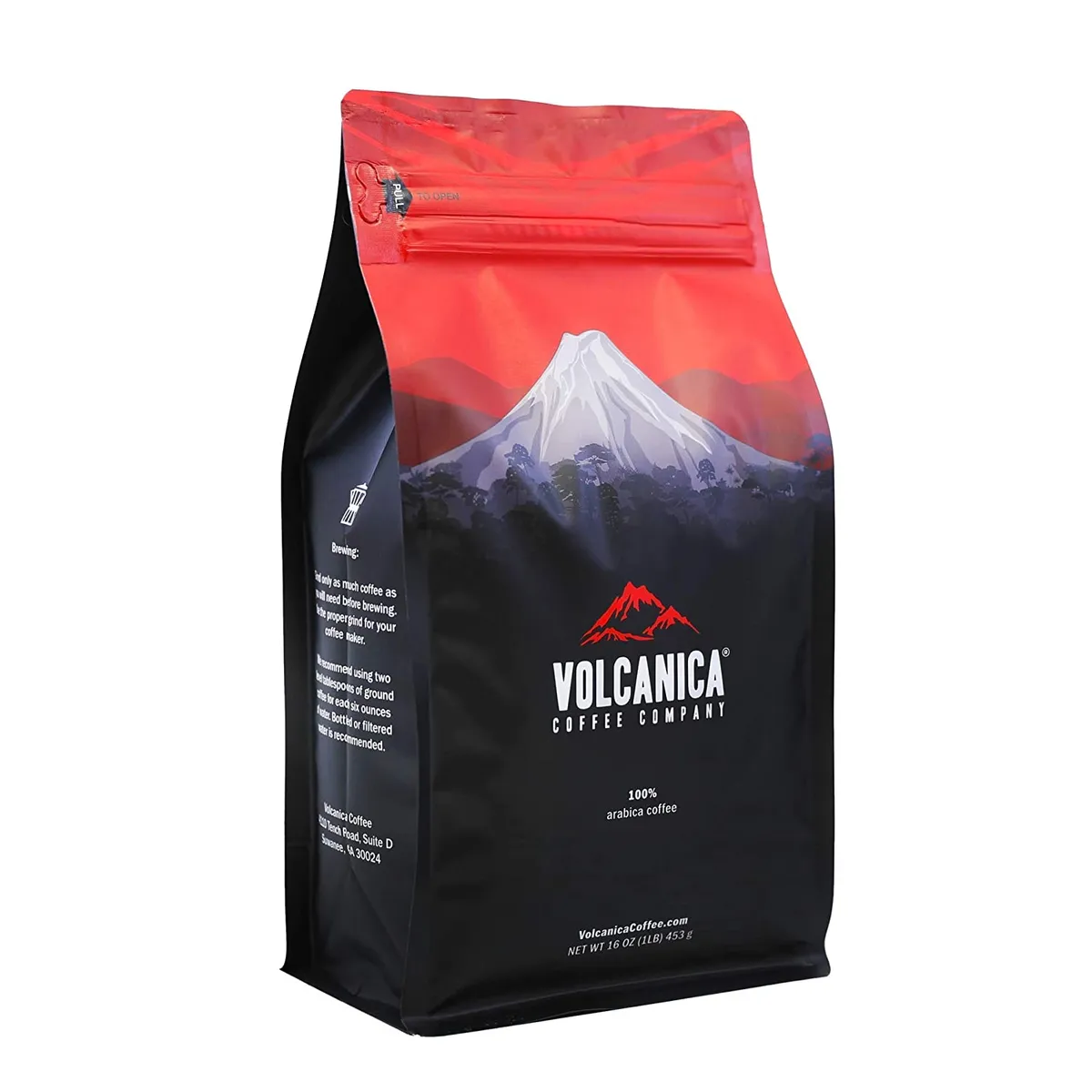
Geisha Coffee from Costa Rica, fresh roasted, low caffeine content. 100% Customer Satisfaction Guaranteed.
Key Features:
- 100% Pure Geisha Coffee from Costa Rica
- Rich chocolate notes
- Medium roasted whole beans
- 30% less caffeine than other coffees
Pros:
- Highly prized varietal
- Gentle acidity
- Medium body
- Silky mouthfeel
- Long, lingering finish
- Fresh roasted
- Immediately packed and sealed to assure freshness
- 100% Customer Satisfaction Guaranteed.
Intelligentsia Coffee - Season’s Best Bundle
⭐ 4.5/5 • 💰 ~$53
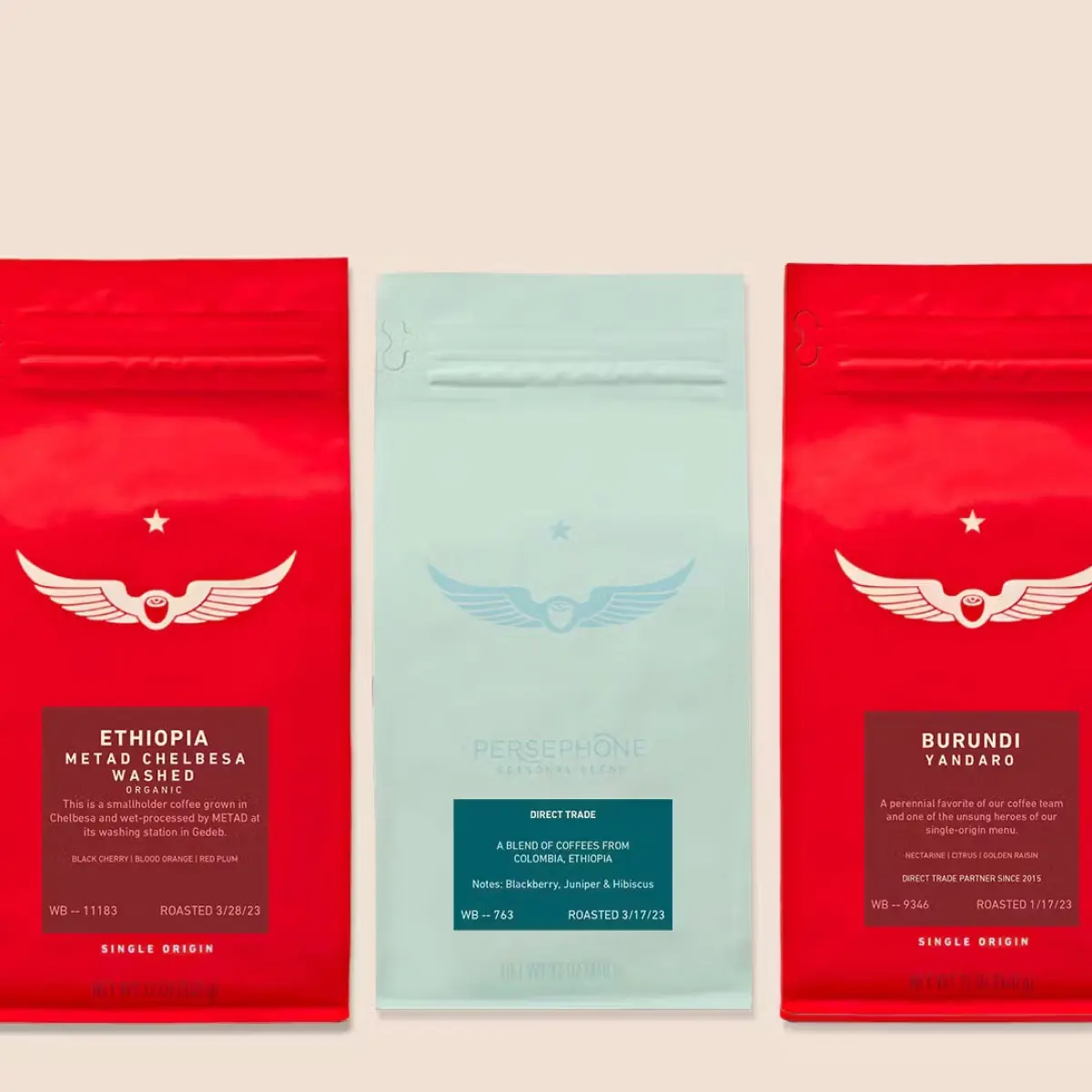
Intelligentsia Coffee is a specialty coffee roastery that sells single-origin and coffee blends from around the world. The roaster’s single-origin coffee comes from regions in the Americas, Africa, and Asia. Launched more than 2 decades ago in 1995, the Chicago-based roastery operated coffee bars, training labs, and roasteries in various cities in the US. Enjoy Intelligentsia’s Seasonal Blend Pack with coffees from East Africa and Latin America at 10% off.
Pros:
- A Larger-scale operation that produces coffee to reach more consumers
- Works with various types of farmers, including women’s groups
- Highly traceable single-origin coffee
Altruistic Joe
⭐ 4.5/5 • 💰 ~$39
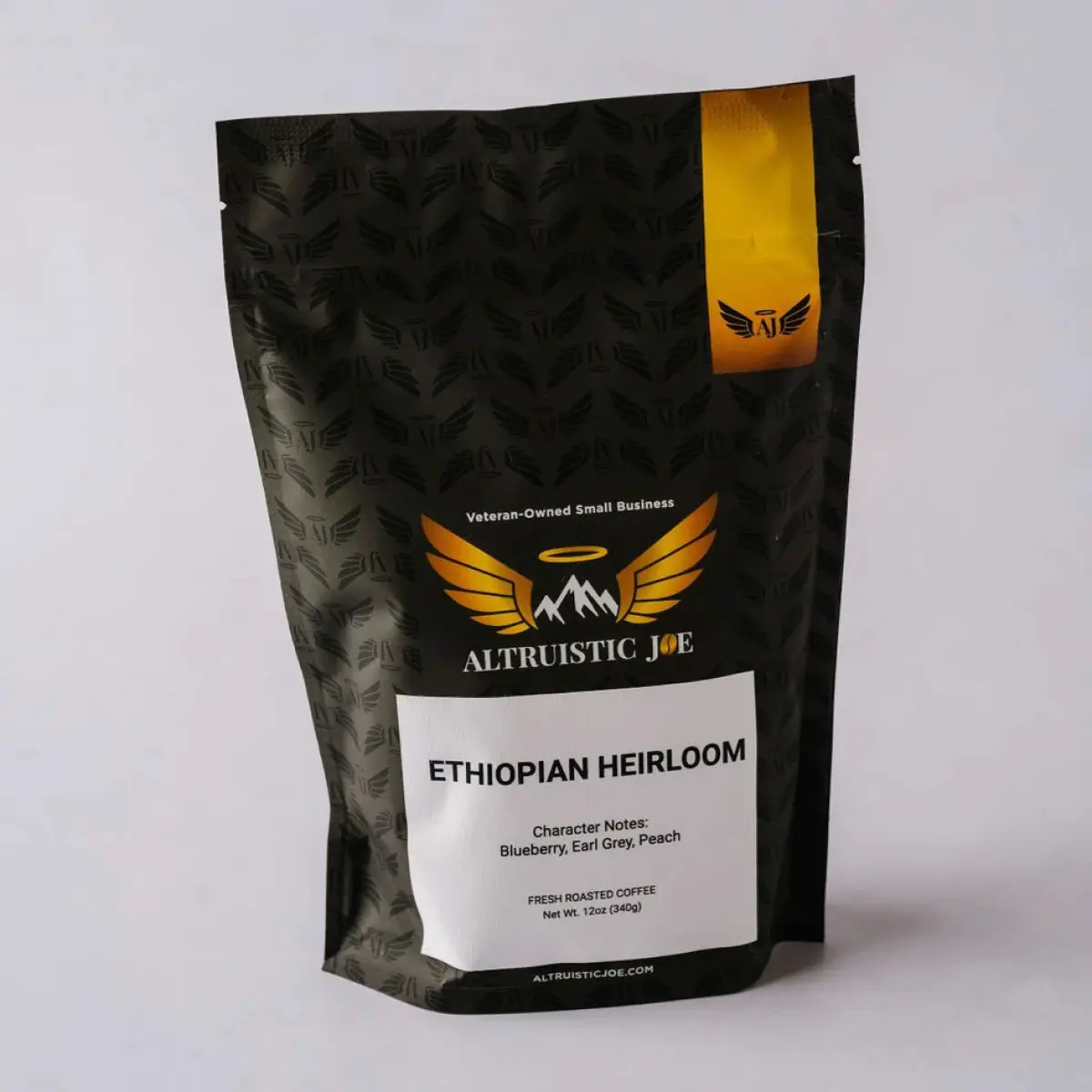
Altruistic Joe is a veteran-owned coffee roaster that sources the best coffee from around the world. The roaster operates by remitting 20% of its net earnings to charitable causes. The brand sells a range of single-origin and blended coffee. Single-origin coffee is sourced from various regions in Africa and Latin America. Don’t know what coffee to choose – try Altruist Joe’s Single Origin Sample Pack.
Pros:
- Donates up to 20% of its revenue to charity causes
- Sells single-origin and year-round blends
- Offers decaf single-origin coffee
What are Single Origin Beans?
Single-origin beans, also known as single-estate beans, refer to coffee beans that have been distinctively grown and harvested from a single source. Beans labeled as single origin are usually traced to a single farm, farmer, producer, crop type, or region in a country. In some instances, single-origin coffee also comes from the same cooperative.
Compared to coffee blends, single-origin coffee beans are very easy to trace. After all, with a single source, you can know exactly where the coffee comes from unlike with a blend. Because only one type of coffee is used, single-origin usually features the highest quality coffee beans. This is done to reflect the origin of the coffee and help to maintain its commitment to quality.
Single-origin coffee usually depicts the flavors and characteristics of the coffee from that particular area. So, coffee lovers who want to discover different coffee profiles and flavors from across the world benefit from single-origin coffee. On the other hand, retailers selling specialty and single-origin coffee can easily communicate with their customers about the coffee.
Traceability allows retailers to pinpoint and share personable information about the region, climate, land, farm, and even the cultivar. In fact, when it comes to single-origin coffee, the terroir is an important factor.
The coffee’s terroir is what gives the drinker the unique sensory experience of the coffee based on its origin. The terroir is usually affected by environmental conditions such as altitude, shade cover, annual rainfall, temperature, and soil nutrients. This explains why Robusta coffee from Vietnam will taste completely different from those grown in Tanzania.
Similarly, robusta coffee grown within Tanzania will still vastly vary based on the region it is grown in. With the ever so changing agricultural practices, the terroir can also be influenced by farming practices and coffee processing techniques.
Single-estate coffee has also become a growing concept in recent years due to the growing popularity of specialty coffee. With the rise of specialty coffee, there’s also been a need for single-origin coffee to best highlight this concept.
A good example is the Nguyen Coffee brand which sells specialty single-origin Vietnamese coffee. While Vietnamese coffee isn’t new in the market, not many brands offer single-origin Vietnamese coffee. Traditionally, Vietnamese coffee is served in a brewing tool, known as the Phin filter.
Now, to truly experience the authentic Vietnamese coffee characteristics and flavors, the coffee is best enjoyed in a Phin filter. This is why the Nguyen coffee brands focus on providing both authentic traceable Vietnamese coffee and the Phin filter to the market so coffee drinkers can truly enjoy the coffee.
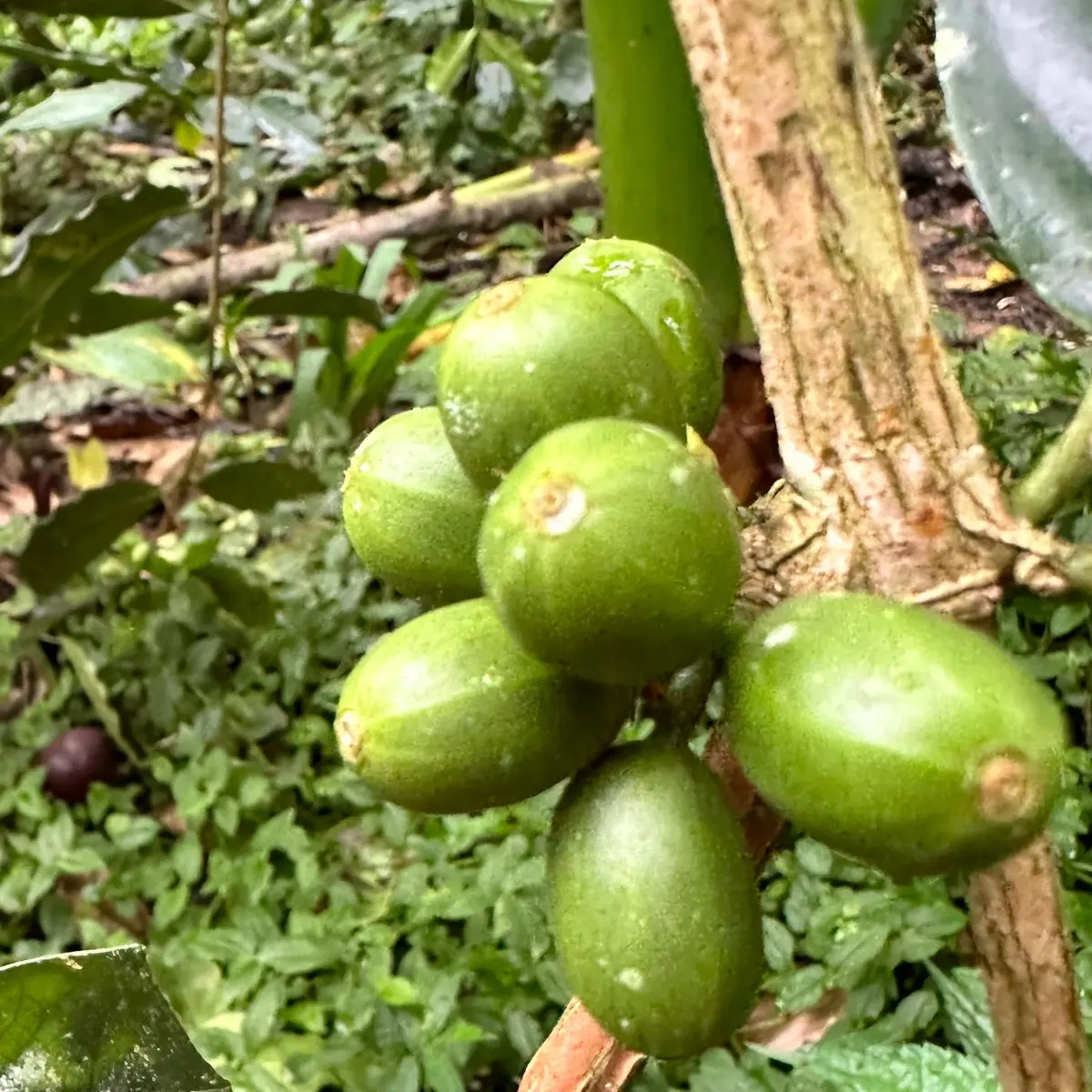
Single-Origin Coffee Beans vs Coffee Blends
Specialty coffee offers two main categories, i.e. single origin and coffee blends. As expected, coffee blends are the opposite of single-origin coffee, consisting of more than one single-origin coffee type. Unlike single-origin coffee, coffee blends aren’t easily traceable. This is because they may contain anywhere from two or more coffee beans from different origins.
However, coffee blends aren’t necessarily a bad thing. Coffee blends usually combine multiple origin beans for features to produce a consistent and well-rounded taste. They are carefully selected, blends offer a gentler taste with a harmonious aroma, flavor, and mouth feel.
Coffee blends typically work best for beginners or frequent drinkers. Generally, single-origin and blended beans are distinguished by three factors, i.e., flavor profile, purity, and consistency.
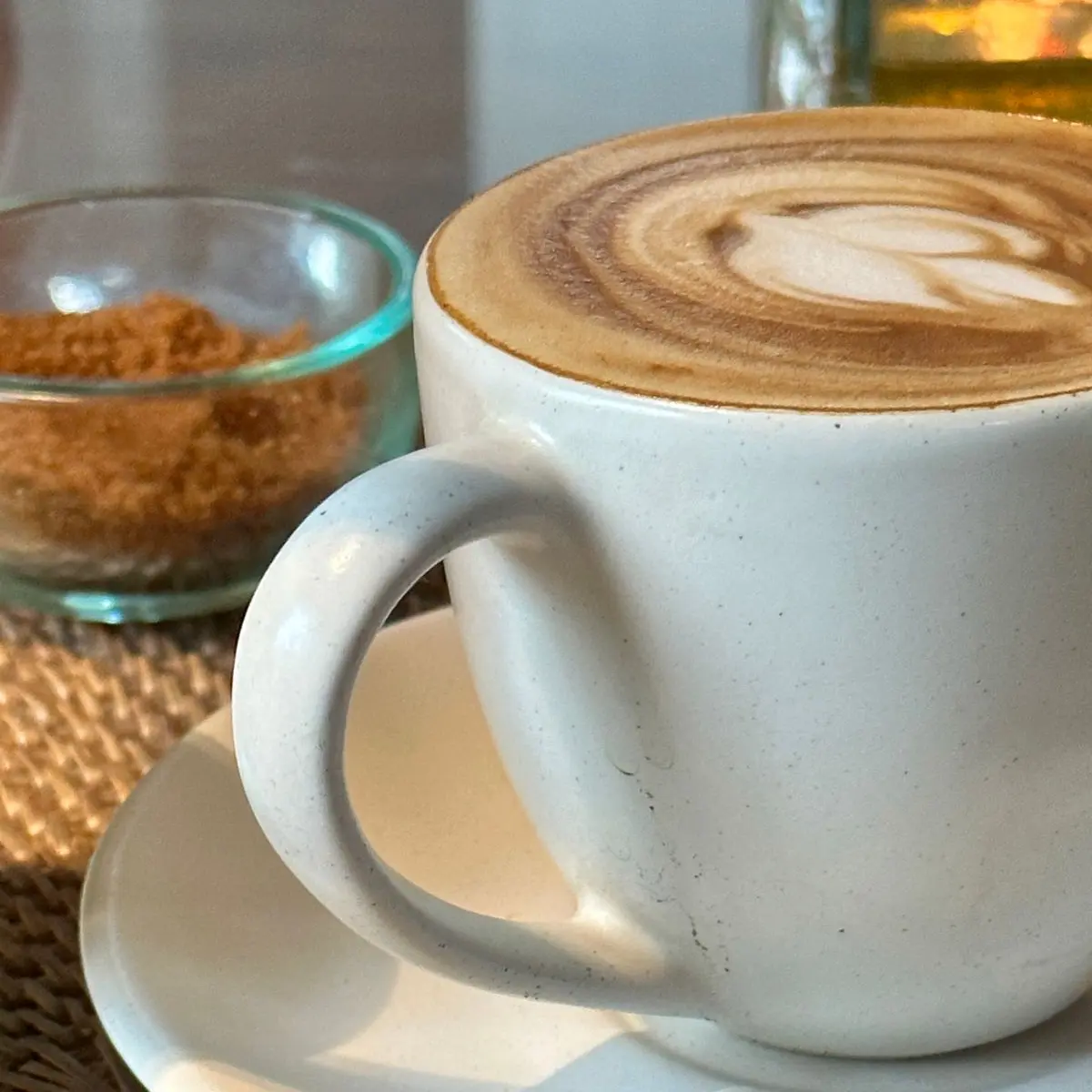
Flavor and Aroma Profile
While blends get theirs from various bean elements, single-origin beans boast an original and untapped flavor. After all, coffee blends combine a selection of beans sourced from different regions. The beans are carefully selected for their particular features to create a particular profile. This means that their flavor profile is usually balanced and rounded. Different roasters will also curate specific blends, whether for regular coffee brewing, espressos, or specialty coffee, like cappuccinos.
Single-origin coffee beans boast an original flavor, reflecting their origin. They tend to be bolder tasting with a more exotic and robust profile. Depending on the region they come from, single-origin coffee beans also develop striking signature aromas with subtle chocolate, cinnamon, earthy, berry, or floral overtones. Their acidities and body are also unique, explaining why a cup of single-origin coffee is not as approachable as blends.
As previously mentioned, the flavor and aromas of the coffee are influenced by environmental factors, including location, rainfall, climate, and altitude. Coffee grown at altitudes higher than 1000m/3280 feet in an area receiving rainfall of less than 1600mm annually tends to be the most prized. Typically, it develops an impressive aroma with a slight bitterness, acidity, and body. You will enjoy more pleasant characteristic flavor notes in coffee grown on mineral-rich land. A good example of such coffee is coffee grown on the foothills of volcanic mountains.
On the other hand, coffee grown in altitudes lower than 850m/2789 feet receiving higher rainfall tends to be earlier and less popular. This type of coffee develops a higher level of bitterness. It is also less aromatic while developing an earthier and grassier flavor profile.
This doesn’t just happen out of coincidence. The high altitude and lower rainfall environment are more favorable for the coffee’s growth than the lower altitude and heavy rainfall counterpart. At a higher altitude and with lower rainfall, the coffee’s ripening period is extended, harnessing more nutrients and natural flavonoids. This, in turn, significantly improves the flavor profile of the coffee berries.
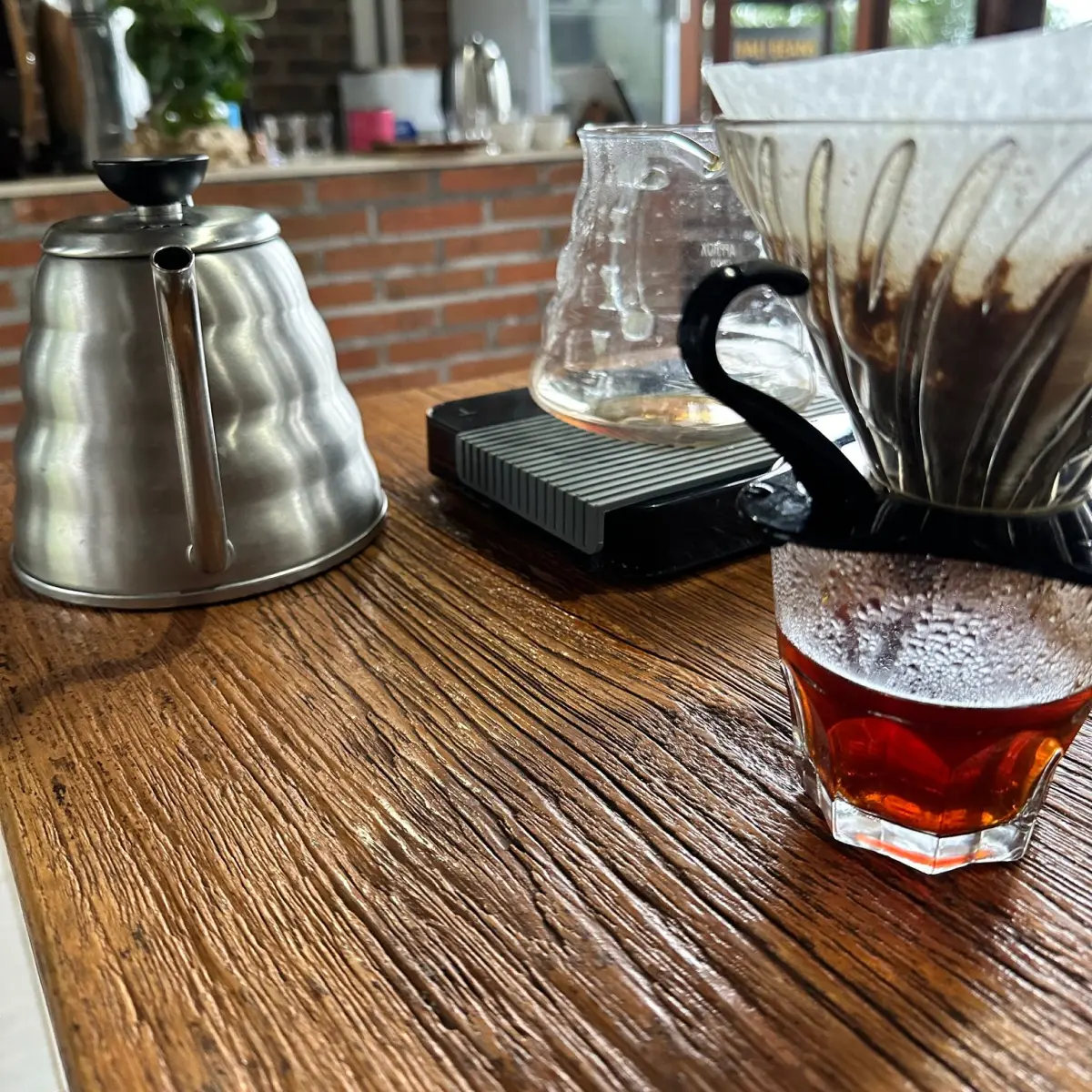
Purity
Single-origin coffee beans tend to be of higher quality and purity, reflecting their origin. They produce the cleanest taste, best enjoyed without mixing. So, you want to avoid using single-origin coffee for specialty drinks, like cappuccino or lattes.
Similarly, single-origin beans may not be ideal for coffee preparations, such as espresso. Typically, espresso uses dark roasted beans. Dark roasted beans are usually striped off of their original flavor and natural components during the Maillard reactions.
This, in turn, produces a more caramelized flavor profile that goes well with espresso. This explains why typically find espresso blends using multiple-origin beans. Coffee beans are carefully selected to combine and make the most balanced and stable espresso blend. To truly enjoy single-origin beans, light to medium roasted beans are excellent choices. You can then choose the brewing method that works best for you.
Note: Some single-origin beans can work with milk-based specialty drinks, depending on the coffee-to-milk ratio. If you are curious, you can always ask your barista or roaster for recommendations.
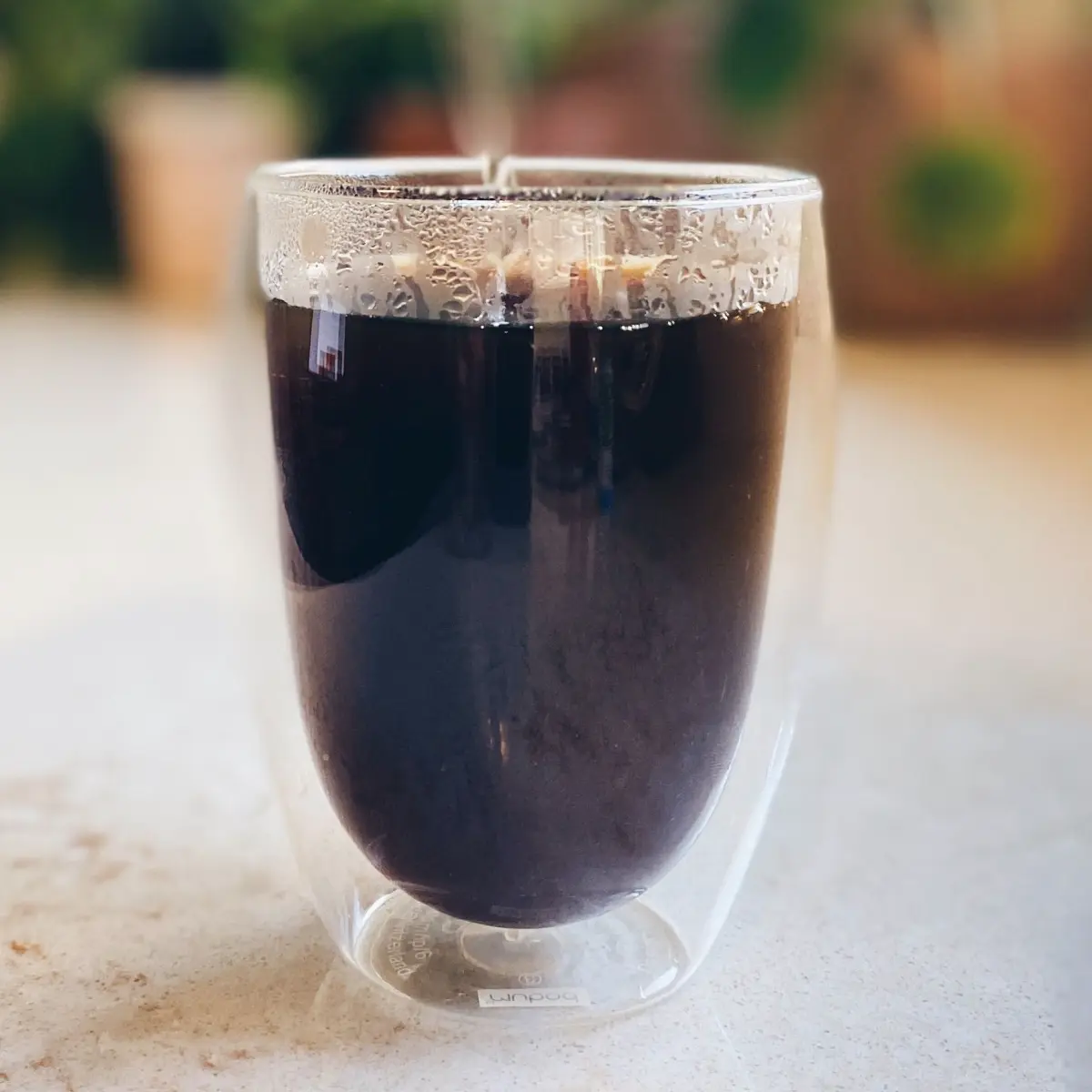
Consistency
It’s a little easier to maintain consistency with blends. Even if there are slight seasonal changes in the coffee blends, you will still enjoy a more balanced coffee profile. On the other hand, single-origin coffee beans don’t always come with consistency.
In fact, coffee roasters have a way to replicate the same blend taste in every pack they sell. This explains why you find your regular store-bought coffee tasting the same year after year. On the other hand, single-origin coffee is pretty different when it comes to consistency.
When sampling the coffee at different intervals, you will notice some slight variations with different seasonal conditions. So, when you experience slight changes with every new pack of the same single-origin coffee beans, don’t be surprised!
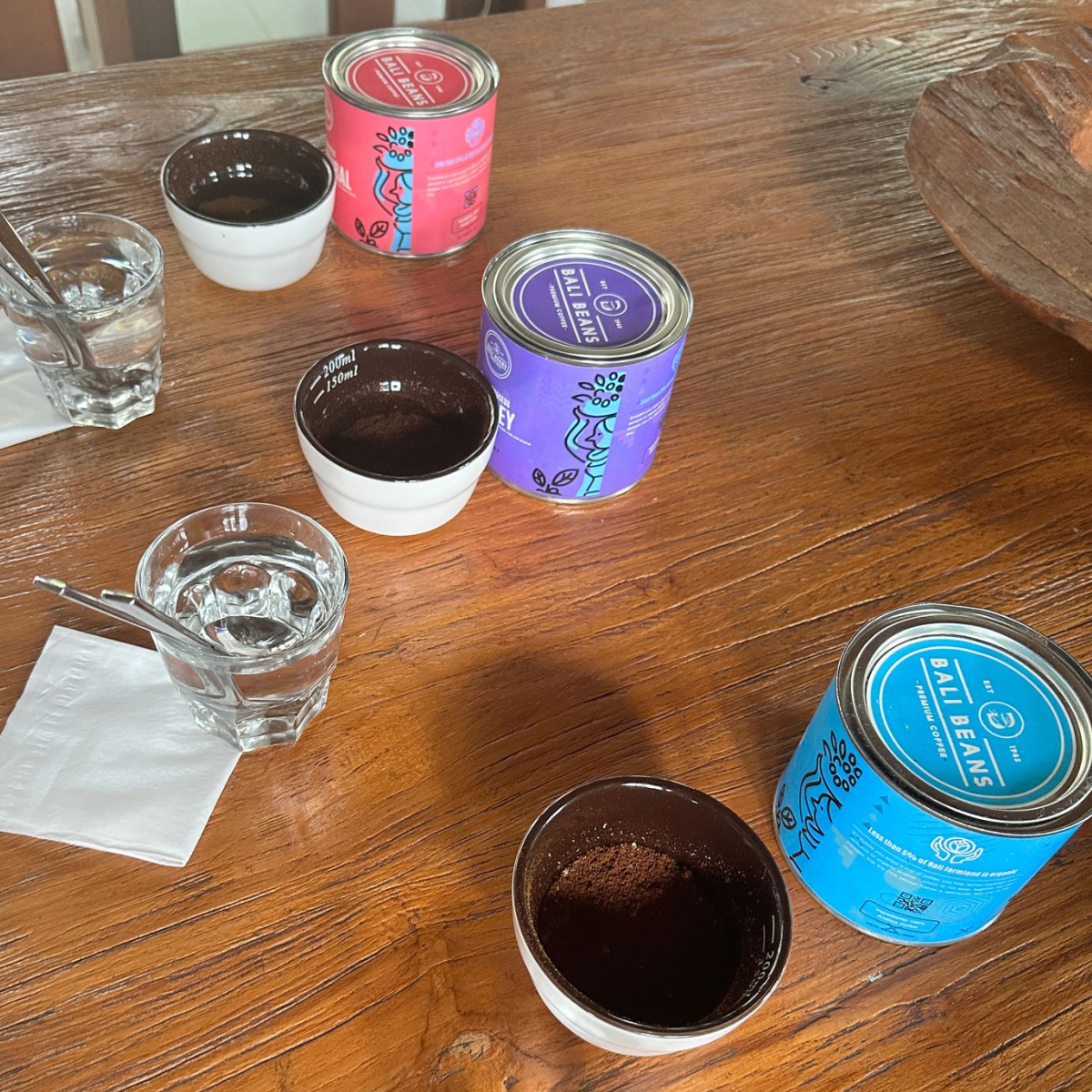
Coffee cupping 3 different single origin coffee beans
The Growing and Roasting Process
As previously pointed out, single-origin coffee comes from the same farm or estate to give it a consistent flavor profile and characteristics. In some instances, single-origin coffee also comes from cooperatives. This is when smaller-scale farmers within a small area, village, or region band together, collecting coffee of the same varieties to sell it for a more sustainable profit.
The roasting process of single-origin coffee is also an important factor in the flavor profile**. Typically, single-origin coffee beans are lightly roasted to allow them to retain their unique flavors. This is because roasting the beans for longer results in the entire organic compound and flavonoid makeup of the beans breaking down and oxidizing.** This creates a darker roast with more caramelization and a sweeter taste. However, the original flavors of the beans would’ve been lost. This concept is very different for coffee blends. The coffee blends are roasted at different degrees depending on the characteristics of the selected beans.
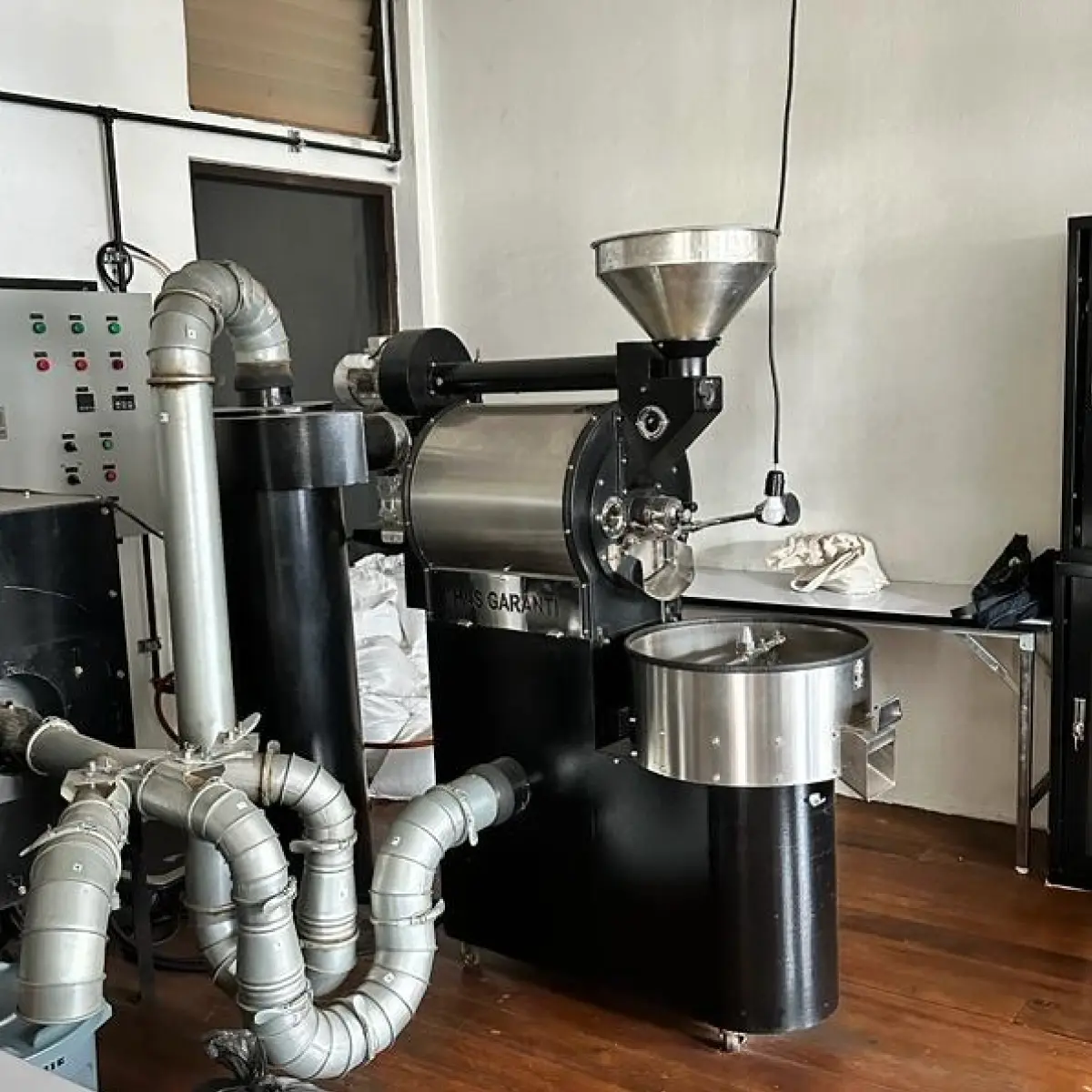
Sustainability and Ethics
In addition to flavor superiority, the number one perk to purchasing single-origin coffee is its traceability. Since the coffee originates from a single farm, estate, or cooperative, it is very easy to trace it to the original farmer.
This is one of the biggest motivators for farmers and coffee producers to maintain superior quality in their beans. However, this doesn’t mean that all single-origin coffee is of high quality, you still have to exercise vigilance when picking the right suppliers. The traceability of the coffee also makes it easier to track the supply chain and ensure coffee producers are fairly compensated.
Single-origin coffee also allows small-scale farmers to band together and sell their harvest as a cooperative for higher pay. Generally, the higher quality single-origin coffee fetches at a higher price. With fewer supply chains and more transparency, these cooperatives are guaranteed higher and fairer pay.
Coffee beans used in blends are less easy to trace. After all, roasters and companies put together different beans to achieve the profile they want. But, in many cases, the blend recipe is usually a proprietary property.
At the end of the day, it is extremely difficult for the end user to truly know what beans are in the coffee and where they are from. Similarly, it is difficult to figure out if the coffee is fair trade and organic.
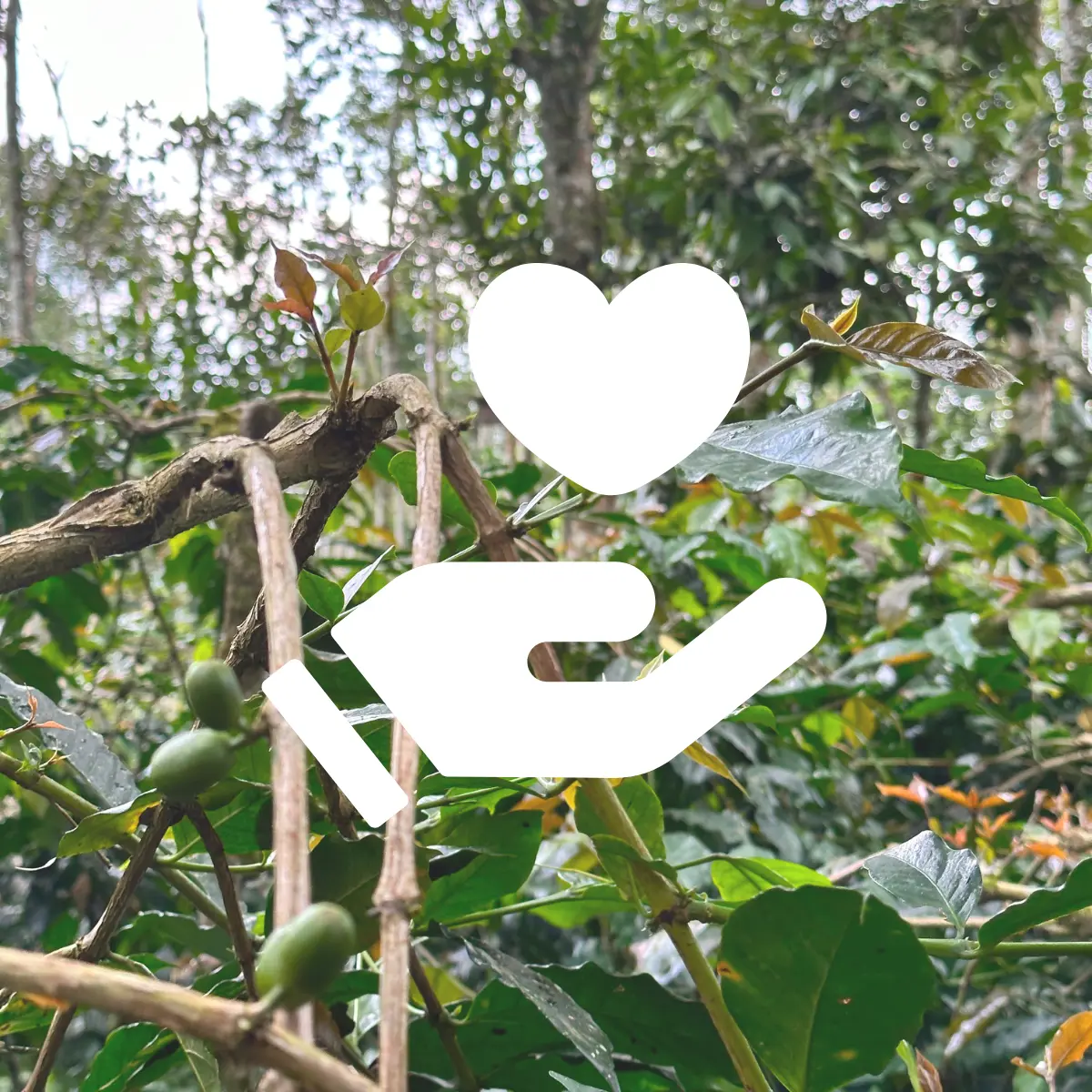
Why is Single Origin Coffee Beans More Expensive?
Single-origin specialty coffee is a premium product, priced over $30 per pound, characterized by high-quality and unique flavors. Though sought after by coffee enthusiasts, farmers face challenges earning profits due to labor-intensive processes. In this video, Insider Business explores coffee production in Kenya, examining the reasons behind its high cost and quality.
Conclusion
Single-origin coffee beans continue to grow in popularity among third-wave coffee drinkers. Even with its popularity, you still want to take a few steps back and figure out If it’s for you or not. Of course, it’s never a bad idea to try new flavors. Yet, you have to go in with the right knowledge.
Single-origin coffee from various regions will have its own unique flavor and characteristics. Since it’s not your usual blend, the flavors can be bold and exotic. Sometimes, the flavors are even overwhelming – but, it’s worth the ride. In fact, if you truly want to experience coffee at its best and original state, single-origin coffee is perfect.
If you are embarking on this adventure for the first time, you can always start with more forgiving and mellow coffee from Central and Latin America. Central American coffee usually boasts a smooth and cleaner flavor with sweet, tart, and fruity undertones. They also have some acidity to them. On the other hand, Latin American coffee is sweeter, creamier, and chocolatey with slightly less acidity.
If you want to go all in, African and Asian coffee tends to offer bolder and more exotic flavors. African coffee from eastern Africa tends to be fruity or floral with a complex flavor profile and full body. East African coffee is also quite fragrant – taking your entire senses for a whirlwind coffee-drinking experience.
Asian coffee from regions in Indonesia and Vietnam tend to be less acidic but very much complex and pleasant. They also offer a very different drinking experience from the fruity and floral counterparts, leaning on the savory side.
